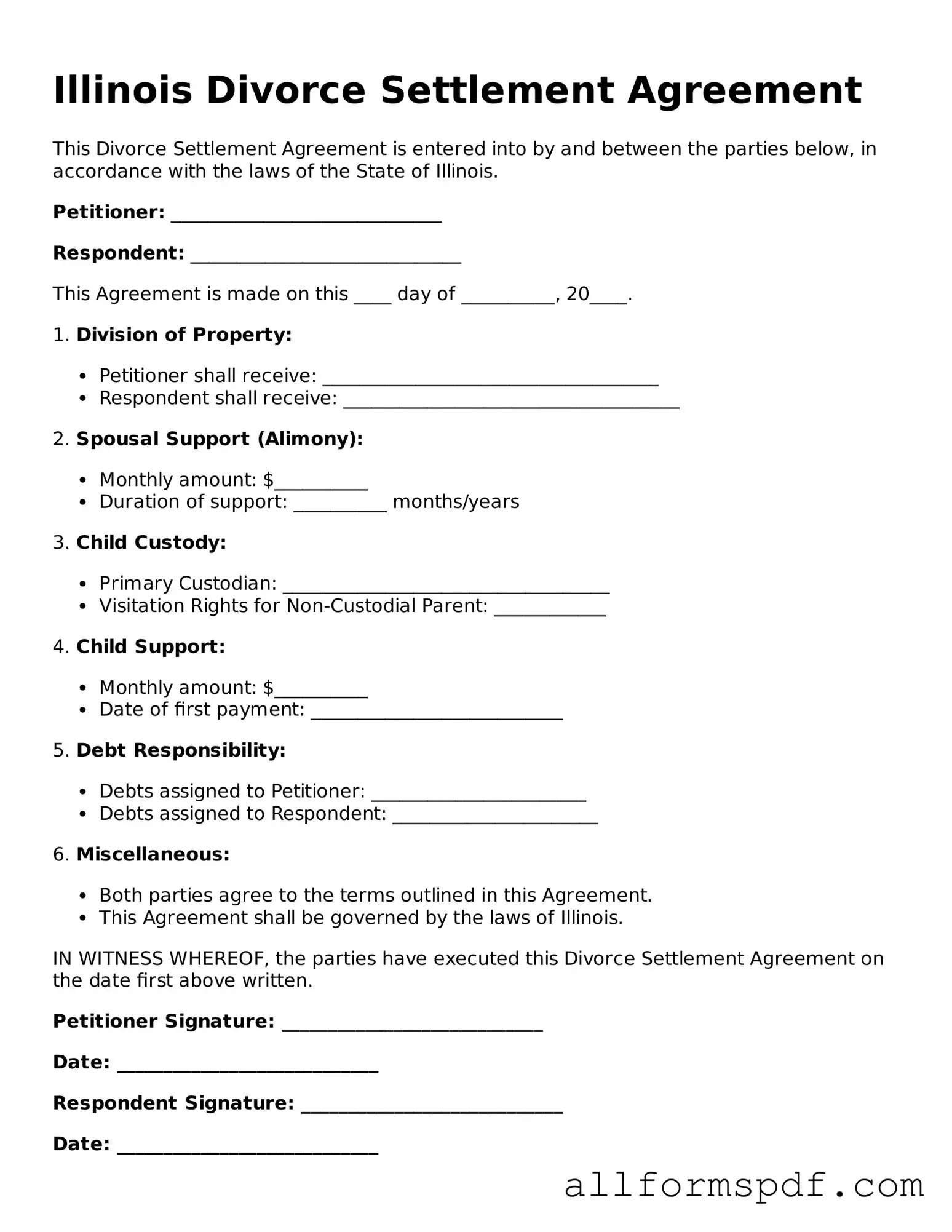Filling out the Illinois Divorce Settlement Agreement form can be a daunting task. Many people make common mistakes that can complicate the process. Understanding these pitfalls can save time and reduce stress.
One frequent error is not providing complete information. Each section of the form requires specific details. Omitting information, whether it’s about assets, debts, or child custody arrangements, can lead to delays or even the rejection of the agreement. Always double-check that every section is filled out accurately.
Another mistake is failing to update the form after negotiations. Once discussions have taken place, the agreement should reflect the latest terms. If changes occur but are not documented, misunderstandings may arise later. It’s crucial to ensure that the final version of the form mirrors what both parties have agreed upon.
People often underestimate the importance of clarity. Using vague language can create confusion. It’s best to be as specific as possible when describing assets, liabilities, and responsibilities. Clear terms help prevent disputes down the line and make it easier for both parties to understand their obligations.
Additionally, many overlook the need for signatures. Both parties must sign the agreement for it to be valid. Sometimes, one party assumes the other will take care of this, leading to incomplete submissions. Always confirm that all required signatures are present before submitting the form.
Another common issue is not considering tax implications. Dividing assets can have tax consequences that affect both parties. Ignoring these implications can lead to unexpected financial burdens later. Consulting a financial advisor or tax professional can provide valuable insights.
Lastly, some individuals neglect to seek legal advice. While it may seem straightforward, divorce settlements can be complex. Legal counsel can help navigate the nuances of the law and ensure that the agreement is fair and compliant. Seeking guidance can prevent costly mistakes and protect your interests.
